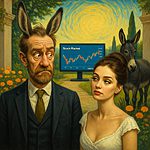What is Hot Money: Unveiling the Intricacies
Dec 30, 2024
Introduction: Deciphering the Nuances of Global Capital Flow
In the intricate world of economics, ‘hot money’ emerges as a fascinating phenomenon that exemplifies the complex interplay between human behaviour and financial markets. This rapid movement of funds between countries is driven by the pursuit of short-term gains, often exploiting interest rate differentials and anticipated shifts in exchange rates.
From a behavioural economics perspective, hot money flows can be seen as a manifestation of what Nobel laureate Daniel Kahneman calls “fast thinking” – quick, intuitive decisions based on readily available information. This concept aligns with the behaviour of investors who swiftly move large sums of capital in response to perceived opportunities or threats in global markets.
The Mechanics of Hot Money
Hot money typically originates from capital-rich developed countries and targets emerging markets like India, Brazil, China, Turkey, and Malaysia. Several factors influence its flow:
1. Declining interest rates in developed nations
2. A trend towards international investment diversification
3. Implementation of sound monetary and fiscal policies in emerging markets
Example: In 2011, an investor in the US could capitalize on interest rate disparities by depositing funds in a Chinese bank, given the Chinese currency’s undervaluation. This illustrates how hot money exploits market inefficiencies and regulatory arbitrage opportunities.
Our Take on Hot Money: A Unique Perspective
In our viewpoint, hot money goes beyond the economic jargon; it symbolizes an act where central banks create money out of thin air, seemingly to “rob and fleece” hardworking individuals. This distinctive perspective challenges the conventional narrative, highlighting the potential negative impact of speculative capital movements on the average person.
What is Hot Money: Unveiling its Market-Distorting Scourge
A substantial influx of money will inundate the system once the markets have factored in all the negative news. The sheer magnitude of the funds injected by the Federal Reserve dwarfs the Bull Run witnessed in 2009, rendering it insignificant in comparison. The amount of money already poured into the market surpasses the scale of the 2008 financial crisis by a considerable margin.
Officially, it is anticipated that over $5 trillion will be injected, but unofficially, that figure could exceed $10 trillion. Neel Kashkari, the president of the Federal Reserve Bank of Minneapolis, emphasised on CBS’s “60 Minutes” that an infinite amount of cash is available in the Federal Reserve. He affirmed their commitment to take necessary measures to ensure an adequate cash supply within the banking system. We will do whatever we need to do to make sure there’s enough cash in the banking system.” https://yhoo.it/2JdtRlH
And there you have it, a tacit acknowledgement that forever Q.E. is real and here to stay. When the Fed states it will do whatever it takes, you better believe this statement. Regardless of what the penguins state, the Fed maintains an environment conducive to the hot money.
If that is not enough, then this should help you understand what the Fed is willing to do. By the way, we stated that they would take this route.
Forms and Measurement of Hot Money
Hot money manifests in various forms, including:
– Short-term foreign portfolio investments
– Bank loans with short investment horizons
Estimating the total value of hot money proves challenging due to its rapid and elusive nature. One approximation method involves subtracting a nation’s trade surplus, deficit, and net foreign direct investment from the change in foreign reserves.
The Psychological Drivers of Hot Money
Behavioural economics can explain investors’ behaviour in hot money flows. Dr. Richard Thaler, a pioneer in this field, introduced the concept of “mental accounting”—the idea that people treat money differently based on context. This explains why investors might be more willing to take risks with short-term speculative investments (hot money) than long-term savings.
Impact on Emerging Economies
While capital flows can enhance welfare by facilitating consumption smoothing and higher consumption levels, sudden inflows with a short-term horizon may yield adverse macroeconomic effects:
1. Inflationary pressures
2. Genuine exchange rate appreciation
3. Widening current account deficits
Emerging market economies often employ exchange rate appreciation and interest rate reduction measures to counter these effects. However, these strategies pose their challenges and potential downsides.
Fed’s Grand Heist: Unmasking the Thievery Behind Soaring Hot Money
After all the money the Fed has created, one would think the masses would say “no mas”; instead, they are begging for more. Do you know what kind of effect such vast amounts of hot money will have on the markets for years? The naysayers can talk all they want about supply lines being backed up for months or other scenarios that they pull out of their rears. The market will eventually discount (if it has not already done so) all those scenarios. Furthermore, these experts are severely downplaying the role of technology. Suddenly, many businesses will see that many personnel can be replaced with AI-based technology without interrupting the flow of goods. Replacing them will improve efficiency on a colossal scale.
Behavioural Insights and Market Stability
Recent research in behavioural finance has shed light on a critical and often overlooked driver of market instability: herding behaviour. This psychological phenomenon occurs when individuals, instead of making decisions based on their analysis and information, follow the actions of others. The tendency to conform can be potent, especially in financial markets with rampant uncertainty and fear of missing out (FOMO).
Herding behaviour often exacerbates market volatility, particularly during heightened speculation or uncertainty. When investors collectively rush to buy rapidly appreciating assets—driven by the belief that “everyone else is doing it”—prices can be pushed to unsustainable levels. This behaviour fuels the formation of market bubbles, where asset prices significantly exceed their intrinsic value. Conversely, when fear takes hold and the herd moves to sell, the rapid withdrawal of capital can trigger sharp declines, leading to market crashes.
One classic example is the dot-com bubble of the late 1990s. As technology stocks soared, investors poured money into companies with little to no earnings simply because others were doing the same. The resulting bubble eventually burst, leading to massive losses for those who followed the herd without fully understanding the underlying risks.
Interestingly, herding behaviour is not solely driven by retail investors; institutional investors can also fall prey to this psychological trap. Fund managers, for example, may feel compelled to follow market trends to avoid underperforming their peers, even if they believe the trend is unsustainable. This can create a feedback loop, where the actions of a few influential players lead to widespread market movements, amplifying both gains and losses.
Understanding herding behaviour and its impact on market stability is crucial for investors and regulators. By recognizing the signs of herd-driven bubbles and crashes, investors can take a more contrarian approach, avoiding the pitfalls of following the crowd. For regulators, addressing the underlying causes of herding—such as asymmetric information and the pressure to conform—can help mitigate the extreme volatility associated with hot money flows and contribute to a more stable financial system.
Incorporating behavioural insights into market analysis provides a deeper understanding of price movements. It equips investors with the tools to navigate the psychological complexities of the market, potentially leading to more informed and resilient investment strategies.
Conclusion: Conquering the Chaos of the Hot Money Era
The era of hot money is no mere challenge—it is a battlefield, demanding cunning, foresight, and unrelenting adaptability from all who dare to engage. Investors, policymakers, and economists must rise above the fray to survive and dominate a world shaped by the ferocious ebb and flow of capital. This is a game of speed, intellect, and psychological acumen, where only the sharpest minds prevail.
Dr Robert Shiller’s insight, “The market is not just a machine; it’s a social phenomenon,” is more than a passing observation—it is a rallying cry. The markets are alive, pulsating with human emotion, fear, greed, and ambition. To master the dynamics of hot money, one must dive into this volatile current, not as a victim but as a strategist, armed with the tools of behavioural psychology and the precision of economic analysis.
Hot money flows are not bound by logic alone. They are influenced by whispers of fear, the roar of optimism, and the silent machinations of technological innovation. Those who cling solely to traditional metrics will find themselves outpaced, outmanoeuvred, and ultimately left behind. Success in this arena demands a multidisciplinary arsenal—a fusion of behavioural insight, technological acumen, and an iron will to adapt to relentless change.
In this unprecedented era of financial interconnectedness, the stakes are higher than ever. Hesitation is not an option; complacency is a death sentence. Victory belongs to those who see the invisible threads binding market psychology to capital flows and those who understand the “what” and the “why” behind the chaos.
This is no time for mediocrity or half-measures. The future belongs to those bold enough to challenge convention, dissect disruption, and embrace volatility as their greatest ally. The hot money era is not a storm to be weathered—it is a proving ground for those audacious enough to seize its potential and bend its power to their will. Will you?















